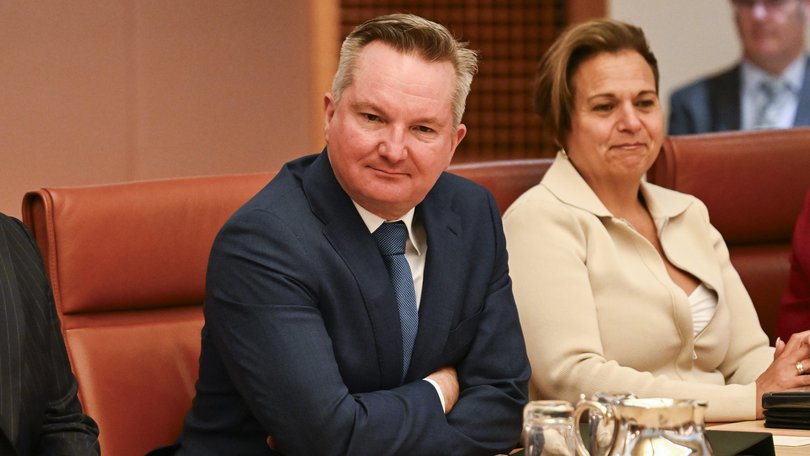Chris Bowen and Labor announce $432m boost to green hydrogen project despite ‘investment headwinds’

Climate Change and Energy Minister Chris Bowen has announced a $432 million boost for a green hydrogen project in the Hunter Valley, despite acknowledging this week the energy source is facing “investment headwinds”.
The Labor Government says its investment in Orica’s Hunter Valley Hydrogen Hub will secure the future of ammonia and explosives manufacturing at Kooragang Island by reducing its reliance on gas, keeping local manufacturing competitive and sustainable.
The development of green hydrogen is a crucial element of Labor’s strategy to transition from fossil fuels and to reach its target to generate 82 per cent of the nation’s electricity from renewable sources by 2030.
Sign up to The Nightly's newsletters.
Get the first look at the digital newspaper, curated daily stories and breaking headlines delivered to your inbox.
By continuing you agree to our Terms and Privacy Policy.However, businesses are wary of investing due to market uncertainties in the emerging sector.
The Hunter Valley Hydrogen Hub was initially a joint proposal between Orica and Origin Energy, with the latter pulling out of the initiative in October last year, saying it was too expensive and risky.
Mr Bowen at the time expressed his disappointment that Australia’s potential to be a green hydrogen industry leader had been sold short, stressing that government incentives, including its $8 billion head-start program could unleash billions in private investment.
In his own statement, Origin CEO Frank Calabria said the company was still open to exploring commercial hydrogen options in the future but warned that the “hydrogen market is developing more slowly than anticipated.”
His caution echoed an earlier decision last July by multinational metals giant Fortescue, led by billionaire Andrew Forrest, to axe jobs and slow down its own plans for the green hydrogen technology.
The difficulties faced by the emerging sector were also underscored in Queensland this week after state government owned energy company Stanwell withdrew support from the CQH2 project, where costs had reportedly blown out to over $14 billion from original estimates of $12.5b.
The Central Queensland Hydrogen Project had been hailed as one of the country’s most ambitious plans for the technology and a key stepping stone on the way to reaching Net Zero targets.
The sector was facing “investment headwinds,” admitted Mr Bowen earlier this week, but he stressed there was no other option to green hydrogen for decarbonising heavy industry.
The Minister on Friday said the Hunter project would secure “long-term, high-quality jobs” for the region, allowing it to lead the way in transforming the country into a “renewable energy superpower”.
“This investment shows we can secure existing industries such as ammonia and fertiliser production by transforming how they’re powered – creating new clean-tech jobs and future-proofing the Hunter’s economic base,” he said.
The project – which will receive funding from the Australian Renewable Energy Agency – is set to deploy a 50-megawatt electrolyser powered by renewable energy, producing around 4700 tonnes of green hydrogen each year.
The Government argues the switch from gas to green hydrogen will cut emissions from Orica’s ammonia production facility, helping to produce green ammonia for domestic use across mining, agriculture and manufacturing sectors.
It has also touted the plan as an opportunity to enable Australia to export clean renewable hydrogen and renewable ammonia overseas, creating jobs and economic benefits as the world moves towards decarbonisation.
This $432m announcement follows an $814m award to Copenhagen Infrastructure Partners’ Murchison Green Hydrogen Project in Western Australia earlier this year.
In a press conference in Canberra on Monday, Mr Bowen underscored the Government would continue to prioritise green hydrogen in its energy policy.
“Green hydrogen has an important role to play in to the future. I’ve seen no other option to decarbonising heavy industry and moving away from gas than green hydrogen,” he said.
Only Australia and a handful of countries in the Middle East had the capacity to develop a substantial green hydrogen industry for export, he said.
“That’s a remarkable opportunity for our country. It doesn’t mean it’s easy or straightforward or go smoothly all the time. But it remains a remarkable economic opportunity.”

